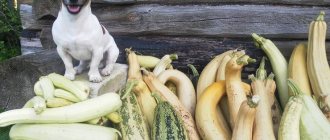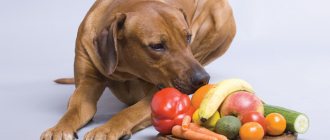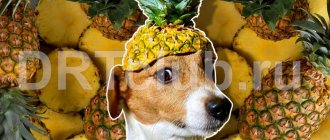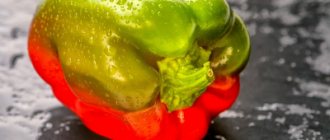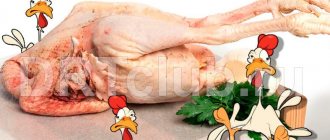Modern owners of four-legged pets prefer to save time and feed their pet with ready-made food. Of course, the production products are carefully thought out and balanced. But not all owners trust ready-made food and prefer to pamper their charges with homemade food. When preparing natural foods, the main thing is to remember that the diet is not only nutritious, but also rich in vitamins and other beneficial substances. It is the owner’s task to know well which vegetables the dog can eat, as well as which fruits. After all, these products are a storehouse of useful vitamins and microelements.
Does a dog need vegetables?
When getting a shaggy pet, every potential owner should know which vegetables can be given to dogs and which ones can be harmful to them. Of course, root vegetables are not a staple food. But they can be a good source of useful vitamins and microelements for dogs that eat natural food. For example, almost all vegetables and fruits are a storehouse of healthy fiber, which has a beneficial effect on your pet’s digestive system.
In addition, most root vegetables contain large amounts of vitamin C and K, as well as folic acid, pectin, carotene, mineral salts of iron, magnesium, and potassium.
Many fruits are extremely popular with dogs. As a result, they can be used as a reward for obedience or correctly executed commands. The dog will happily gnaw on carrots, beets or a piece of apple as a tasty treat. Thus, fruits and vegetables can also serve as your pet's favorite toys that can be eaten.
What vegetables can a dog boil?
Almost all gifts from the garden can be given to your pet raw. But some, in order to prevent some physiological inconveniences for the pet, are recommended to be subjected to heat treatment. So, what boiled vegetables can you give your dog?
Cauliflower, a storehouse of vitamins and nutrients, is considered a useful addition to an animal’s diet. However, it is preferable to give it to your pet in boiled form. The fact is that cauliflower contains fiber, which may be poorly tolerated by animals. The inflorescence is especially useful for weakened and sick dogs. Undoubtedly, cauliflower is the answer to the question of what vegetables can be cooked for a dog. With its nutrients and beneficial substances, the plant is able to quickly restore strength and restore energy.
Plain white cabbage contains potassium, calcium, vitamins A and C, and antioxidants that cleanse the blood of toxic substances. However, high amounts of fiber can cause bloating in your dog. therefore, cabbage should only be given boiled or baked. Steaming the vegetable will preserve all the beneficial substances and microelements. You should know this when answering the question of what vegetables can large breed dogs, which spend a lot of strength and energy, eat.
It is very useful to give your pet pumpkin, which is rich in vitamins B6, B9, B5, B2, B1, C, A, T. The vegetable also contains magnesium, calcium, iron, iodine, and iron. Pumpkin slows down the aging of dogs due to the large amount of flavonoids and vitamin T. The vegetable is quite versatile. If desired, the pet can also enjoy raw melons. What vegetables can be given to dogs in their porridge? Pumpkin is perfect!
Another useful vegetable is zucchini. It is enriched with a large amount of nutritious moisture, saturated with useful substances. Zucchini is great for obese dogs. It is recommended to introduce the vegetable into the diet boiled or baked.
Raw garden fruits
Fresh cucumbers are completely safe for animals. They contain substances necessary for the body such as magnesium, potassium, copper, vitamins B1, C, K. Cucumbers have a beneficial effect on the functioning of the cardiovascular system and kidneys. These are dietary food products that are ideal for pets with signs of obesity. Vegetables are especially useful for older dogs and animals that spend a lot of energy. Cucumbers are the only fruit that can only be eaten raw. These green fruits are the answer to the question of what vegetables can be given to small breed dogs. Only the pieces of treats should be small so that it is convenient for your pet to eat them.
Radishes are also given to dogs raw. It is rich in calcium, which helps strengthen bones. However, after adding radishes to your pet’s diet, you should monitor its vital activity. It may be an allergen for some dogs. Also, the vegetable is strictly prohibited for animals suffering from diseases of the gastrointestinal tract, liver and kidneys.
Another controversial vegetable is bell pepper. Boiled or stewed fruit can be added to your dog's diet. However, in its raw form, the vegetable retains more nutrients. When treating your pet with pepper, you should give preference to red ripe fruits. They contain many times more nutrients than yellow or green vegetables.
Who shouldn't
Even despite the rich vitamin composition of fruits, not everyone benefits from vegetables, especially store-bought, greenhouse vegetables (long, dark green fruits that are sold in supermarkets all year round). To grow them, some unscrupulous farmers may use fertilizers, which increases the likelihood of negative manifestations of allergies. A dog can be poisoned by cucumbers that contain nitrates. Signs of poisoning are:
- refusal to eat;
- nausea;
- vomit;
- diarrhea;
- lethargic state;
- rashes on the face, paws, ears.
As such, there is no allergy to cucumbers in dogs, but you cannot feed your pet vegetables uncontrollably. If your dog eats too much fruit, it may cause intestinal upset.
Important!
You should not feed your pet pickled or canned cucumbers. This negatively affects the dog's kidneys.
Salted and pickled cucumbers should not be given to pets, because they contain too much salt, and this is poison for dogs. Exceeding the norm negatively affects the kidneys, and spices, and especially vinegar, which are used in preparing marinade and canning, are harmful to dogs, they reduce the sense of smell and can even cause poisoning. It is not advisable to allow your pets to eat the leaves and flowers of the plant.
There will be no harm to puppies, pregnant or lactating females from cucumbers. Babies can introduce them into their diet along with other vegetables from two to three months of age. You can serve fresh vegetables as part of a vegetable stew, cutting them into small pieces. During teething, small cucumbers can be given to puppies as a toy.
It is recommended to give cucumbers to pregnant dogs as they are low in calories. It is advisable just not to give store-bought ones - due to the risk of poisoning with nitrates and other chemicals that may be present in the fruits.
Vegetable allergens
Not all fruits are well accepted by the body of a four-legged pet. It is highly not recommended to feed some garden gifts to pets. It is especially necessary to know which vegetables can be given to an allergic dog.
Raw potatoes can be dangerous because they contain large amounts of solanine, a toxic substance. Boiled root vegetables are rich in carbohydrates and starch, which provoke obesity and arthritis. In addition, potatoes are not absorbed by the body.
Corn is a source of protein that is not absorbed by the dog’s body. In general, this is not a harmful, but not a useful product.
Onions should absolutely not be given to dogs in any form. The fact is that the vegetable contains thiosulfates, which negatively affect red blood cells. Eating onions can cause anemia. The same goes for garlic. However, there is an opinion that garlic should be given to your pet from time to time in order to fight helminths and strengthen the immune system.
Tomatoes are very beneficial for the cardiovascular system. But they can also be allergens. In addition, tomatoes are a source of nitrates, which negatively affects kidney function. On the other hand, tomatoes cope well with tartar. Therefore, from time to time you can treat your pet with a small amount of tomatoes.
Beets, oddly enough, are also considered an allergen. If there is no reaction from the body, the dog can be fed boiled or baked root vegetables. It has a beneficial effect on your pet's digestion.
Eggplant should also be given with caution. The vegetable is especially contraindicated for animals with kidney disease. Eggplant must be heat treated before serving to the dog.
And it is also important to remember one circumstance. It is not recommended to give snow-white breeds red vegetables (carrots, beets, tomatoes), as this can significantly affect the dog’s color. The snow-white miracle can turn red as a result of such a diet.
And one more important point: what vegetables can small breed dogs eat? Small dogs digest any fruit very poorly. Therefore, when treating your pet to carrots or cucumbers, you should make sure that the pieces are small and easy to chew.
For large
Large dogs need protein food more, so the proportion of vegetables in their diet should be less - on average it is about 20-30%. Also, large breeds are more resistant to the effects of allergens and toxins, so they can be given vegetables from the “risk group” (tomatoes, eggplants, beets) with less fear.
Toxins from onions and potatoes affect their body more slowly - so if your dog accidentally eats a slice of onion or a piece of potato, you don’t have to sound the alarm, but wait until the toxic substances are processed by the dog’s body.
What about fruit?
Garden fruits are no less useful for dogs than vegetables. Almost all pets like sweet and tasty fruits. As a result, pieces of apples or bananas can be used as a reward or treat.
Just like vegetables, fruits contain a large amount of vitamins and microelements. Many of them are a source of life-giving moisture. That is why it is recommended to give the fruits to your pet, especially on hot days.
Of course, if the dog’s diet consists of industrial food, all the necessary vitamins and microelements are included in the prepared food. However, as a pleasant treat, from time to time you can give a piece of apple even to “artificial” pets. Thanks to the large amount of fiber, the fruits are an excellent way to help an animal cope with constipation.
However, not all fruits are well tolerated by animals. Like vegetables, some fruits are allergens. Therefore, the owner needs to know exactly what can be given to his pet and what it is better to refrain from.
Acceptable fruits for dogs
Garden fruits, like garden fruits, must be introduced into your pet’s diet with caution: some of them are allergic and are not suitable for complementary feeding. You need to know what vegetables and fruits can be given to dogs.
Apples rightfully take first place among the recommended fruits. They are tasty, juicy and very healthy. Another advantage is that apples practically do not cause allergies. They can also be used as part of a diet. Grated apple helps very well with gastrointestinal disorders. A mixture of grated carrots and Antonovka, seasoned with low-fat cottage cheese or kefir, is also considered useful.
In second place in terms of health and nutritional value are bananas. Although this is an exotic fruit and not all dogs perceive it due to its specific aroma, the fruit is still a valuable source of potassium. Half a not very ripe banana once a week – and your dog is cheerful and active! When thinking about what vegetables and fruits your dog can eat, you should know that bananas that are too ripe can cause digestive upset.
Melon is also beneficial for pets. Fragrant and soft, it has an excellent effect on animal peristalsis. A mixture of melon and honey is considered very successful for nutrition, provided that the dog is not allergic to the bee product.
An excellent treat for your four-legged friend is watermelon. His dog can eat as much as he wants. The only reaction of the body will be the dog’s frequent desire to take a walk. It will be especially pleasant to eat cool, juicy melons on a hot day. If the watermelon was grown without the use of pesticides, then the dog can be treated to the rind - a source of useful minerals.
When figuring out what vegetables you can feed your dog and what fruits, we must not forget about plums. Unripe pitted fruits can be given in small quantities. Just like bananas, plums are rich in potassium. However, it should be remembered that overripe fruits accumulate large amounts of alkaloids. This can cause confusion and food poisoning.
Perhaps one of the most favorite fruits among dogs is pears. In addition to being hypoallergenic, the fruits are very good for the kidneys.
Allergy
Most often, allergies in dogs develop to red vegetables - tomatoes, beets, sometimes bell peppers, as well as eggplants. Unfortunately, it is impossible to predict in advance the allergenicity of a particular product - this can only be determined in practice.
However, it is worth remembering that small dogs are much more likely to develop allergies than large ones, so when developing a diet for them it is better to be on the safe side.
Favorite and exotic fruits
Not all garden fruits are recommended for shaggy pets. When discussing what vegetables and fruits dogs can eat, one cannot help but think of exotic foods. It is immediately necessary to make a reservation that overseas fruits should be given with caution, infrequently and in small quantities.
Papaya is a fragrant, sweet fruit that pets enjoy eating. A small slice of peeled fruit can stop diarrhea. But a large amount of fruit causes constipation and increases blood sugar.
Kiwi is rich in vitamin C and valuable fruit acids. If you give this fruit to a dog, then no more than once every 2-3 weeks. A small circle of kiwi will enrich the animal’s body with beneficial vitamins.
Soft varieties of persimmon without pits or peels will help normalize intestinal function and strengthen loose stools. It helps a lot with diarrhea and indigestion.
Apricots should also be given peeled and pitted. It contains hydrocyanic acid. After eating even one apricot seed, a dog can die. The fruit itself is very nutritious. But in young dogs and puppies it can cause diarrhea. Therefore, it is recommended to give apricots to your pet with caution.
Nutrition rules
Proper feeding of your dog will help avoid negative symptoms and intestinal upset. The main thing in nutrition is to maintain a balance of meat dishes and foods rich in fiber.
Nutrition rules:
- meat makes up 50% of the daily diet;
- the remaining 50% includes cereals, vegetables, dairy products;
- vegetables are thoroughly washed;
- fed 2-3 times a day;
- You can’t add salt or spices;
- There should always be clean water next to food;
- food should be varied.
Expert opinion
Makarenko Svetlana Igorevna
Practicing veterinarian, 15 years of experience.
When introducing any new foods into the diet, owners should monitor the dog’s well-being. It is not necessary to give cucumbers daily, 1-2 pieces are enough. in Week.
Citrus fruits: benefit or harm?
So, what vegetables and fruits can you give dogs? And how do citrus fruits affect the animal’s body? The sharp, specific smell of New Year's fruits is unpleasant for many dogs. But there are also exceptions.
Nevertheless, the same tangerines are rich in vitamins A, B1, B2, B6, C, E, PP. In addition, they contain calcium, potassium, phosphorus, magnesium, and sodium. Citrus fruits also contain easily digestible proteins, carbohydrates and fats.
All these substances are very useful for your pet. However, citrus fruits are strong allergens. Dogs, like people, have personal intolerance to the product. A negative reaction to eating fruit can be hormonal imbalance, problems with the thyroid gland and pancreas. In addition, fruits can have a toxic effect on the body.
However, if your pet loves tangerines or oranges, you can pamper him with one or two slices of his favorite fruit from time to time without fear of serious consequences.
What to do if you are poisoned
The cause of poisoning may be too many cucumbers eaten or the presence of chemicals in the fruit. In the first case, the dog will develop diarrhea, which can be stopped with medications or boiled rice - it has astringent properties and will help the body cope with intestinal upset.
Nitrate poisoning is a dangerous condition. You can suspect it if the pet has become lethargic, hides in a corner or lies on the mat, refuses to eat, or vomits. It is necessary to take the dog to the veterinarian as soon as possible, and if this is not possible quickly, provide first aid. This includes gastric lavage. The dog needs to induce vomiting by giving it a lot of warm water or a weak solution of potassium permanganate. After this, give the dog activated charcoal (1 tablet per 10 kg of animal body weight), provide rest and access to fresh water. As soon as such an opportunity arises, show the dog to a specialist.
Vegetables and fruits are prohibited
When analyzing whether dogs can eat vegetables and which ones, you need to familiarize yourself with the forbidden fruits:
- Grapes are in first place in terms of harmful effects on the animal’s body. In most cases, it can cause kidney failure in pets. After eating grapes, small breed dogs suffer from diarrhea and vomiting.
- Pomegranate disrupts digestion and irritates the gastrointestinal tract. The bones are very toxic to small dogs.
- Avocado contains a substance that depresses the heart and respiratory system of dogs.
- Peach pits are poisonous and the fruit itself causes diarrhea.
- Quince can cause difficulty swallowing and vomiting, leading to severe loss of fluid.
- It is strictly undesirable to offer rutabaga to your pet. The root vegetable is a strong allergen and causes thyroid disease.
Dogs and berries: pros and cons
There is no categorical ban on treating your pet with raspberries or gooseberries. However, as in the case of vegetables and fruits, new foods should be introduced into the animal's diet with caution. The first portion should be small, and the dog’s behavior should be observed by the owner for some time.
Recommended berries are:
- Blueberries are a storehouse of antioxidants. The substances in its composition prevent cell aging and promote their renewal.
- Strawberries can whiten teeth due to the large amount of a special enzyme.
- Raspberries will relieve pain and have an anti-inflammatory effect. In addition, dried raspberry leaves, crushed into powder and added to porridge, will significantly facilitate the birth of a whelping female.
- Rowan and gooseberries are very useful.
- Cranberries have an excellent effect on the condition of the animal’s genitourinary system. Eating berries improves the functioning of the urinary tract. Antioxidants, vitamins A, B, C, K, as well as calcium, phosphorus and potassium help cranberries prevent infections and cleanse the kidneys.
For puppies
Puppies of any breed benefit from vegetable complementary foods in the form of carrots, cucumbers, pumpkins, crushed to a puree. Teenage puppies can be given boiled vegetables in pieces.
It should be remembered that the older the dog, the more protein should be in its diet, therefore, once the puppy reaches adolescence, vegetables must be gradually replaced with meat (of course, not completely eliminating them, but bringing their amount to the “adult” norm).
Can a dog eat greens?
When thinking about what vegetables you can add to your dog’s porridge, you should think about greens. It is recommended to include it in your pet’s diet as it is rich in valuable vitamins and minerals.
Healthy greens are:
- Leaf salad.
- Dill.
- Parsley.
- Sea kale.
- Spinach.
- Young nettle leaves.
- Dandelion leaves.
- Burdock stems.
Sometimes you can include basil, mint, and lemon balm in your diet.
Some dogs enjoy nibbling on plain green grass while walking. This helps optimize digestive processes and cleanse the stomach.
What vegetables a dog can eat and in what quantities is up to the owner to decide. Taking into account the recommendations of veterinarians and experienced dog handlers, you can treat your pet with gifts from vegetable gardens and orchards every day. It is also allowed to introduce several types of vegetables and herbs at one time. However, one item per day will be enough.
Mushrooms and legumes
Having figured out what vegetables can be given to dogs, one cannot help but think about the other gifts of nature. We are talking about mushrooms and legumes.
Peas, beans, lentils and beans are not recommended to be included in the animal's diet. They are poorly digested by the body and do not provide any benefit. Consuming legumes can cause gas and bloating.
Mushrooms are also quite harmful to dogs. The fact is that these organisms absorb all dangerous substances from the surrounding space. And if for the owner the consumption of mushrooms is acceptable, for the pet it can be fraught with serious diseases. Impaired functioning of the liver, kidneys and pancreas is the result of a dog eating honey mushrooms or boletus mushrooms. To avoid such problems, it is best to exclude mushrooms from your pet’s diet.
Are animals afraid of them?
Some time ago, a video circulated on the Internet in which a cat was running away from an ordinary cucumber, which was quietly placed behind her back while she was eating. Many owners could not resist the temptation to check their pet as well. Thus was born the myth that cats and dogs are afraid of cucumbers. Let's see if this is true.
If you analyze the primary sources, that is, comic videos, it becomes clear that the animal is not afraid of the cucumber itself, but of an unusual situation.
Dogs and cats are extremely attached to their territory, and it is important for them to control it. At the same time, while the animal is eating, it is relaxed. And discovering that something has suddenly changed on their territory - a cucumber has appeared - leads to stress.
There is no point in checking your dog this way. This will frighten the animal and can lead to injury and increased mistrust.

